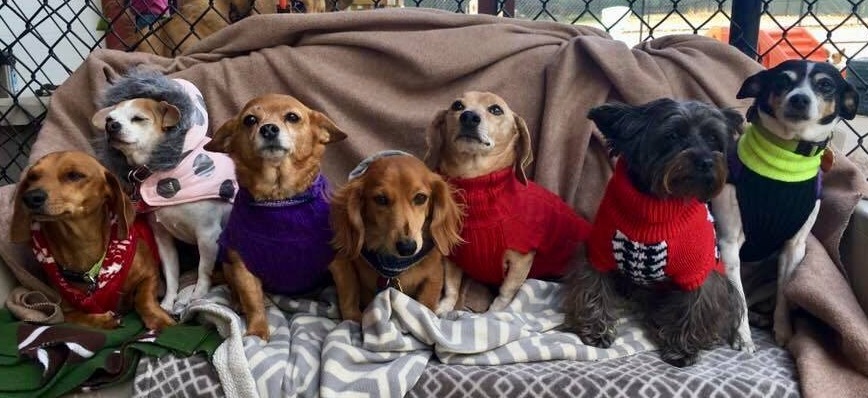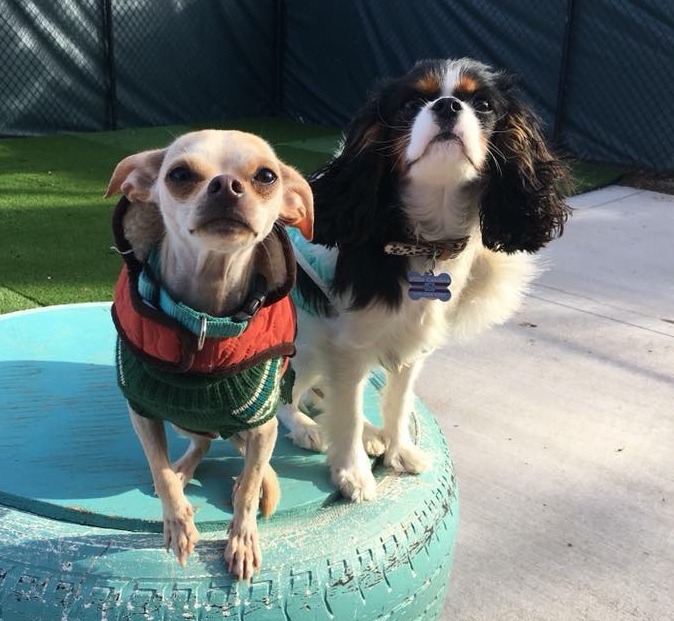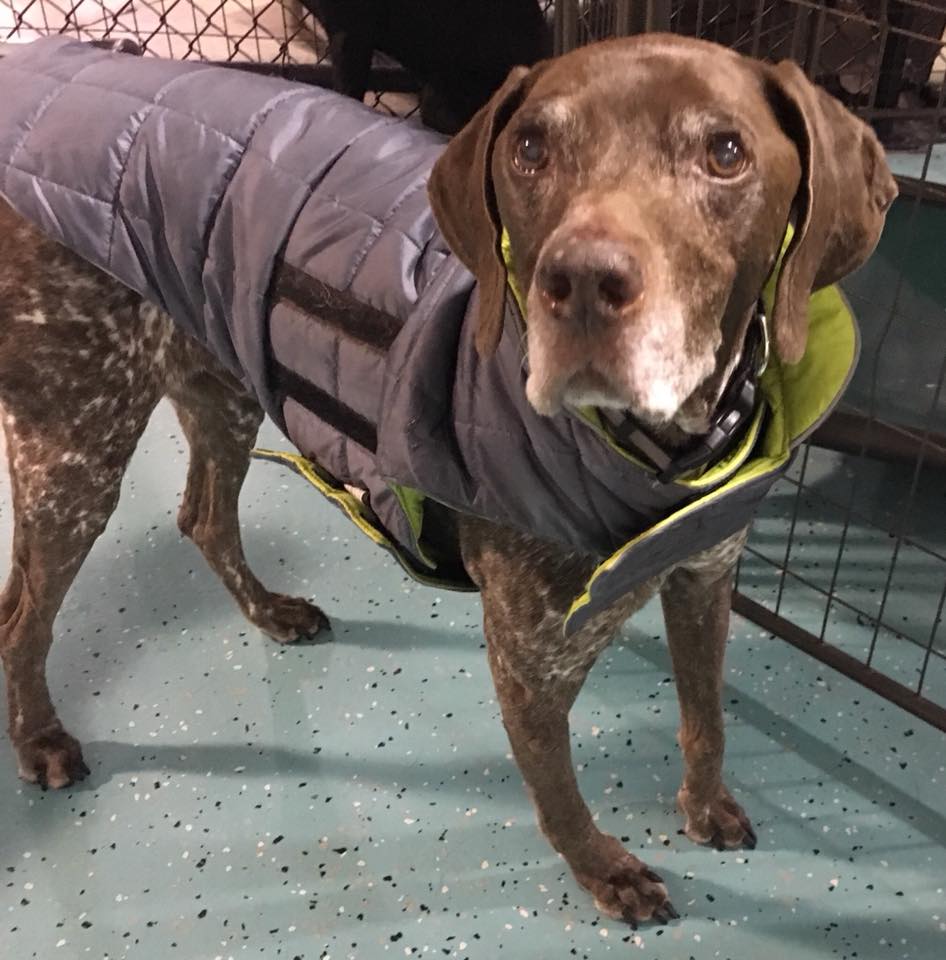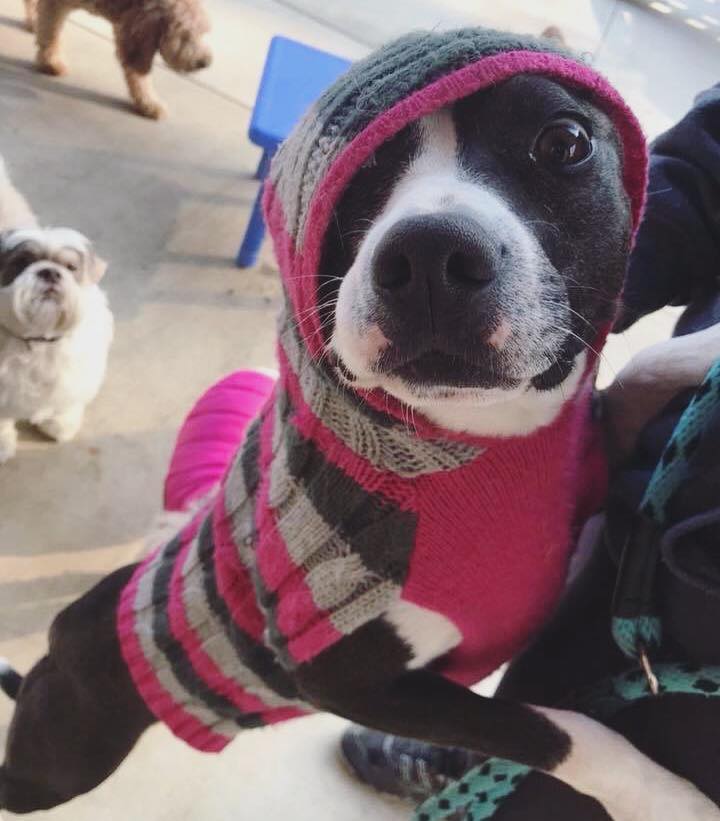I love winter. The escape from the hellish southern humidity is welcome all day around here, and we’ve got piles of doggy sweaters to turn every day into a frosty fashion show! That said, just like in summer, the temperature extremes take a little extra pet-parent-prep, so we’ve put together a few tips to help you and your furry enjoy this time of year safely!

1. SWEATER Weather! Go on and buy that jacket you’ve been eyeing – this is one time where your non-dog-parent friends better not poke fun at you for dressing up your little one! There are certain breeds that really do need the extra warmth – weimaraners, greyhounds, chihuahuas, and dogs with naturally thin coats are obvious, but if you’re a doodle, poodle, or terrier parent who keeps your pup’s fur groomed short, you may want to get in on the winter fashion too! On the flip side, if you’re parenting a Newfoundland, Great Pyrenees, Samoyed, or even a German Shepherd, save your sweater money – thanks to their double coats, they don’t need anything else! In fact, an extra layer could even cause them to overheat.
 2. PAW PROTECTION! I have to say, this is one topic we know a lot about. In the off-leash play world, newbies will often experience a cracked paw pad from the increased activity (ladies, imagine standing in heels for 8 hours after you’ve sat behind a desk for 3 years – YIKES to the feet!), and the cold can cause some of the same. We swear by a product called Musher’s Secret. It’s from Canada and was made for sledding dogs. We keep it in our first aid arsenal year-round. It may have been made for the cold but I also think it’s great for summers here too – hot weather can be even more damaging to those paws, so any kind of barrier protection is essential to have on hand if you like taking your dog on walks! Boots and booties are cool too, but in the South, where we only experience cold for a short time, I find that the dogs are more freaked out by them than anything and by the time they actually get used to them, winter is over. If it’s something you’re considering investing in, I like the ones made by Ruffwear.
2. PAW PROTECTION! I have to say, this is one topic we know a lot about. In the off-leash play world, newbies will often experience a cracked paw pad from the increased activity (ladies, imagine standing in heels for 8 hours after you’ve sat behind a desk for 3 years – YIKES to the feet!), and the cold can cause some of the same. We swear by a product called Musher’s Secret. It’s from Canada and was made for sledding dogs. We keep it in our first aid arsenal year-round. It may have been made for the cold but I also think it’s great for summers here too – hot weather can be even more damaging to those paws, so any kind of barrier protection is essential to have on hand if you like taking your dog on walks! Boots and booties are cool too, but in the South, where we only experience cold for a short time, I find that the dogs are more freaked out by them than anything and by the time they actually get used to them, winter is over. If it’s something you’re considering investing in, I like the ones made by Ruffwear.
3. EATING AND EXERCISE! If you’re still keeping up with your regular doggie daycare routine (yay!), you may want to increase your pup’s food allowance a bit. Even if their activity level is about the same, playing in cooler weather uses more energy. Same goes for those who still maintain a regular walking or jogging schedule. If your exercise routine is different and typically just includes playtime in the backyard, make sure you’re doing your part to provide indoor exercise options for your pet during this time (my dogs chose to “exercise” by shredding and chewing up all the Christmas ribbon). Treat dispensing toys are a favorite. I love the IQ Treat Ball – it’s simple to understand and easy to fill.
 4. WATCH OUT FOR CHEMICALS Antifreeze is one we all know to steer clear of, but raod salt and other de-icing products can also cause problems. Remember, your dog is probably going to lick his paws after you come in from a walk, so he could ingest chemicals just as easily this way. Beat him to the punch by wiping his paws off with a towel every time you come inside.
4. WATCH OUT FOR CHEMICALS Antifreeze is one we all know to steer clear of, but raod salt and other de-icing products can also cause problems. Remember, your dog is probably going to lick his paws after you come in from a walk, so he could ingest chemicals just as easily this way. Beat him to the punch by wiping his paws off with a towel every time you come inside.
5. JOINT CARE: Sort of like humans, the cold may affect senior dogs or those with arthritis more than others. Consider orthopedic bedding or a joint supplement, or check your dog food label to make sure it includes vitamins that will help promote joint health. These pets may not like going for walks in the cold, so believe it or not, this might be a good time to keep them involved in doggie daycare. Typically even if they don’t “play” with other dogs, the stimulation peaks their interest enough to get them up and moving more than they would at home, and indoor (heated) playrooms allow them to maintain movement in a comfortable space.
Take time to ENJOY winter with your furries, y’all! –Lacey




